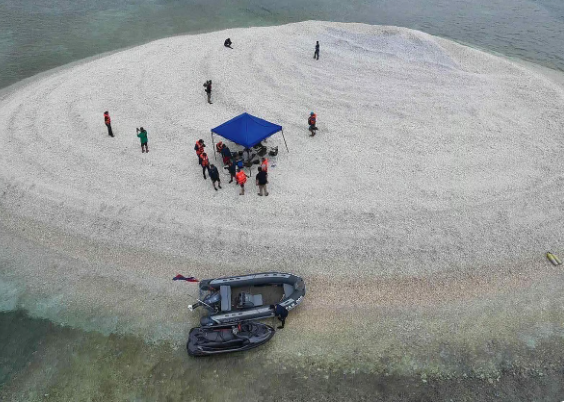Tensions escalated between China and the Philippines on Monday as both countries defended their claims to Sandy Cay, a disputed reef in the South China Sea, following a report from Chinese state media suggesting Beijing had seized control of the area.
The reef, located near Thitu Island — known locally as Pag-asa — is home to a Philippine military detachment and a coast guard monitoring station. On Saturday, China’s state broadcaster CCTV reported that the Chinese Coast Guard had “implemented maritime control” over Tiexian Reef, part of the Sandy Cay group, in mid-April.
The Philippines quickly rejected the claim. National Security Council spokesman Jonathan Malaya refuted the Chinese report at a press conference, stating, “There is no truth whatsoever to the claim of the China Coast Guard that the Sandy Cay sandbanks have been seized.” Malaya accused China of using misinformation to “intimidate and harass” the Philippines, calling the report a “made-up” story and labeling its dissemination as “irresponsible.”
The dispute intensified when CCTV released a photo showing Chinese coast guard officials raising a national flag over the reef, describing it as a symbolic “vow of sovereignty.” In response, the Philippine Coast Guard published its own image on Monday of Filipino sailors holding the Philippine flag over the same sandbank during a mission conducted the previous morning.
Despite the posturing, there are no indications that China has permanently occupied the reef or built any structures there. Sandy Cay remains a group of small sandbanks within the contested Spratly Islands chain, an area claimed by multiple nations but where an international tribunal ruled in 2016 that China’s sweeping territorial claims have no legal basis.
China’s foreign ministry on Monday reiterated its stance, insisting that Sandy Cay belongs to China and justifying its actions as “rights protection and law enforcement activities.” Ministry spokesman Guo Jiakun accused the Philippines of “illegal landing” and “acts of infringement and provocation,” and said China was acting to “safeguard national territorial sovereignty.”
Meanwhile, tensions in the region have been further fueled by ongoing joint military exercises between the United States and the Philippines, dubbed “Balikatan.” China has criticized the drills, claiming they threaten regional stability. Chinese warships have been spotted near Philippine waters since the exercises began last week, with the aircraft carrier Shandong reportedly coming within 2.23 nautical miles (about four kilometers) of Babuyan Island in northern Philippines.
The latest confrontation underscores the increasingly volatile situation in the South China Sea, where strategic interests and nationalist fervor continue to clash.


